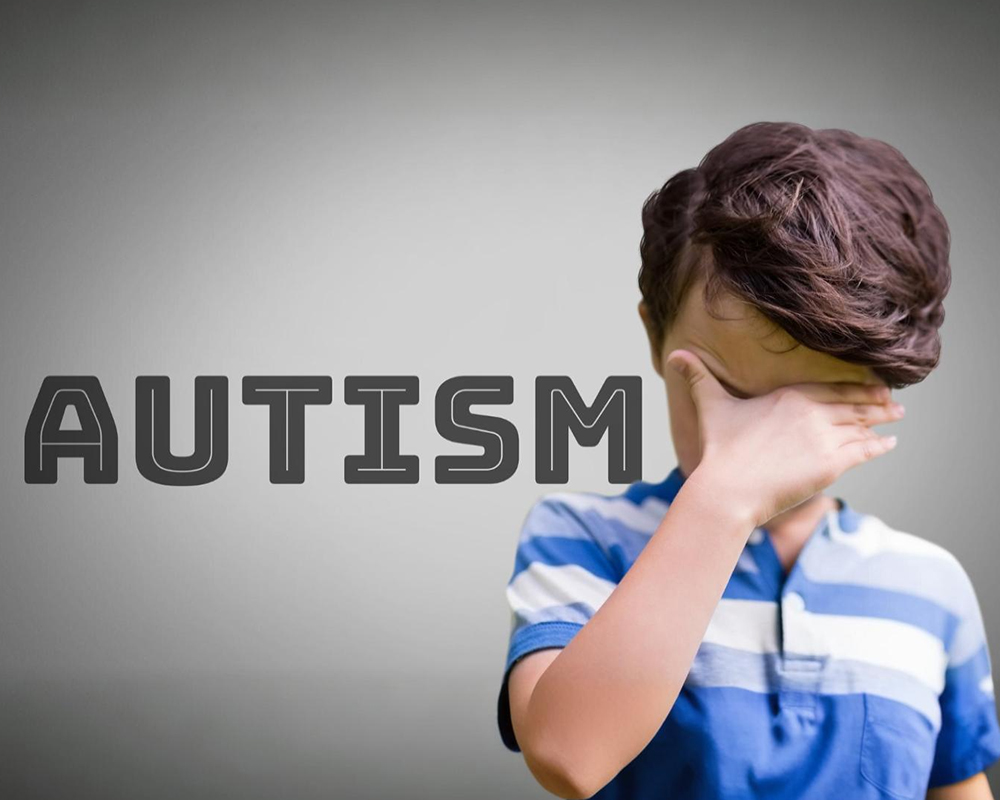With an incidence rate of 26.7%, Autism Spectrum Disorder (ASD) is a neurological condition that affects how individuals interact with their environment. While autism is a spectrum, severe autism refers to the more profound end of the spectrum. Those with this condition often struggle significantly with communication, social interaction, and daily functioning. These challenges can affect many areas of their lives, from personal relationships to basic tasks.
But what exactly is severe autism, and how can we understand it better? In this blog, we’ll explore the symptoms, causes, and treatment options of this complex disorder.
What is Severe Autism?
Severe autism, sometimes referred to as low-functioning autism, describes individuals with significant difficulties in communication, socialization, and everyday activities. Primarily, it falls in the higher domains of Autism Spectrum Disorder (ASD). It is more prevalent among teenagers, with boys being 4 times more prone to it. Typically, these individuals need substantial support to manage daily tasks and live life consistently.
Severe Autism Symptoms
The signs of severe autism vary widely between individuals. Some common symptoms include:
- Communication Issues: Many individuals with severe autism struggle with verbal and non-verbal communication. Some may not speak at all, while others may have limited speech that makes meaningful conversations difficult. They may also repeat phrases or words (echolalia) instead of using language flexibly.
- Repetitive Behaviors: People with this level of autism often engage in repetitive actions such as hand-flapping, rocking, or arranging objects in patterns. These behaviors can help manage sensory overload or provide comfort in stressful situations.
- Limited Social Skills: Individuals may find it challenging to make eye contact or understand social cues. They may avoid interacting with others or struggle to form relationships, as they often do not share emotions or experiences in the typical way. This may even instill a sense of scopophobia in some of these patients.
- Sensory Sensitivities: Patients may have a heightened sensitivity to sensory stimuli. Bright lights, loud noises, or certain textures can overwhelm them, causing stress or meltdowns.
- Difficulty with Daily Tasks: Many individuals need help with everyday activities such as dressing, feeding themselves, or grooming. They often rely on others for assistance in these areas, as these tasks may feel confusing. Sometimes, it may cause situational depression, causing patients to feel distressed as they deal with a life event.
- Aggressive or Self-Injurious Behavior: In some cases, it may lead to extreme depression, self-injury or aggressive behavior. This might include hitting, biting, or head-banging. These actions can stem from frustration, sensory overload, or a lack of communication skills.
What Causes Severe Autism?
The causes of severe autism are different in every individual, though several factors likely contribute to its development.
- Genetic Factors: Certain genetic mutations may increase the risk of developing severe autism, though no single gene is responsible. It’s believed that a combination of genetic and environmental factors may contribute to the development of ASD.
- Prenatal Factors: Some studies suggest that factors like maternal infections during pregnancy, exposure to environmental toxins, or complications at birth may increase the likelihood of the condition. Older parental age is also linked to a higher risk of having a child with autism.
- Neurobiological Differences: Brain structure and function differences are common in individuals with autism. These differences may affect areas of the brain responsible for sensory processing, communication, and social behavior, explaining many symptoms.
- Environmental Factors: While genetic factors play a crucial role, environmental influences may also contribute. However, there is no evidence linking vaccines to autism. Environmental risk factors might include prenatal exposure to certain chemicals, viral infections, or medications.
Diagnosing Severe Autism
Usually, the diagnosis involves a thorough evaluation by specialists, including pediatricians, developmental psychologists, and speech therapists. This evaluation typically includes:
- A detailed developmental history of the child.
- Observations of the child’s behavior and social interactions.
- Use of diagnostic tools like the Autism Diagnostic Observation Schedule (ADOS).
- Input from parents, teachers, and caregivers to understand how the child functions in various settings.
Given the wide range of symptoms, the diagnosis will focus on understanding the individual’s unique challenges and strengths, which allows for more effective treatment planning.
Treatment for Severe Autism
Although there is no cure for autism, several treatments can help manage symptoms and improve quality of life. Treatment plans should be personalized for each individual, focusing on their specific needs.
- Behavioral Therapy: One of the most widely used treatments includes Applied Behavior Analysis (ABA). ABA focuses on reinforcing desired behaviors and reducing negative ones. For individuals with severe autism, ABA therapy helps improve communication, reduce challenging behaviors, and teach essential life skills.
- Speech and Language Therapy: For many individuals, speech therapy is a critical part of treatment. This may involve teaching verbal communication, sign language, or using devices like picture boards or speech-generating devices to help improve communication.
- Occupational Therapy (OT): OT helps individuals with autism develop fine motor skills and manage sensory sensitivities. It also assists with daily living tasks like grooming, dressing, and feeding. Occupational therapists work with individuals to build independence, regulate mood, and improve daily functioning.
- Medication: Some individuals benefit from medications to help manage symptoms like anxiety, aggression, or hyperactivity. These medications must be prescribed and closely monitored by healthcare professionals.
- Sensory Integration Therapy: Sensory integration therapy helps individuals with autism cope with sensory sensitivities. Therapists expose individuals to controlled sensory experiences to help them better tolerate stimuli like light, sound, or textures.
- Social Skills Training: Although socializing can be challenging, social skills training can help individuals with severe autism develop basic social skills. This might include teaching them how to understand social cues, start and maintain conversations, and navigate social situations.
Conclusion
To conclude, severe autism presents significant challenges for individuals and their families. The symptoms, such as communication difficulties, sensory sensitivities, and limited social interactions, can make daily life very difficult. However, with early intervention, tailored treatment plans, and societal acceptance, individuals can recover better.
Hence, understanding severe autism is essential for offering better support and empathy. Whether through behavioral therapy, speech therapy, or medication, there are ways to improve the lives of those affected by severe autism. Each individual on the spectrum is unique and should be treated with personalized psychological care. If you are concerned that you might have autism symptoms, visit a psychologist today.




